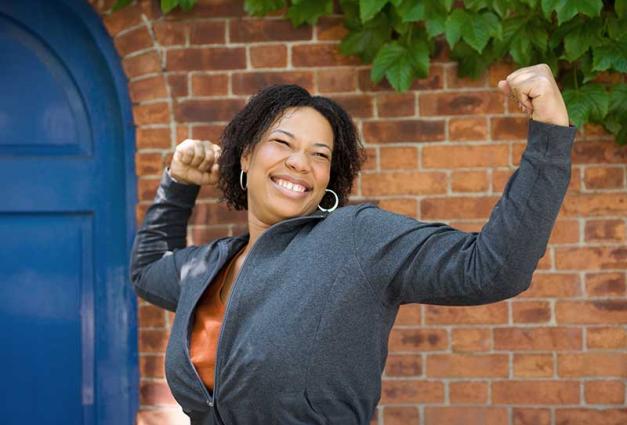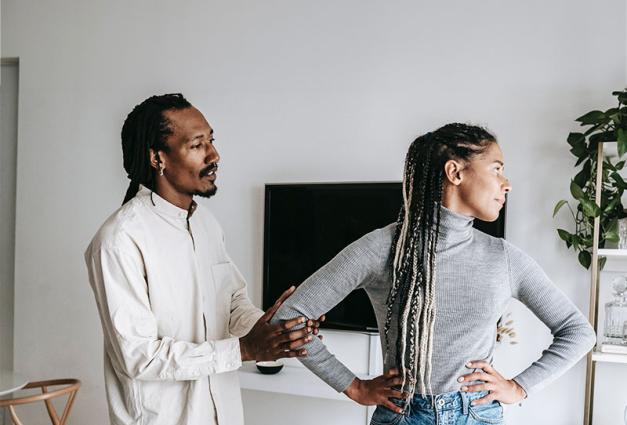What identities do you have? These could include your social groups and roles, both past and present. If you were to get together with one person from each of these groups at the same time—for example, a member from each of your social groups—would you feel as if you could connect to each of them equally? After all, you do have a shared identity with each of these people. Or is there one person or a subset of people with whom you would feel a stronger connection because you value that shared identity more than the others?
Similar questions may shape how multiracial individuals, who have multiple racial identities, perceive other people to whom they are racially similar. For example, in addition to feeling similar to other Black/White people, multiracials who identify as both Black and White, may feel connected to other Black individuals because they share a Black identity as well as similar racialized experiences with those individuals. But would they also feel connected to other multiracial individuals with whom they do not share the exact same racial backgrounds (such as Asian/White individuals) and to other White individuals? Why or why not?
We consider people who share the same identity and experiences as us as “ingroup members,” while we consider those who do not share our identity and experiences as “outgroup members.” For people of color, identifying who is an ingroup member can be protective in the face of individual, institutional, and societal racism: we tend to feel safer and less threatened in contexts where ingroup members are present.
As social psychologists, we were particularly interested in multiracial people’s perceptions of their racial ingroups because multiracial people have two or more racial identities and, therefore, a large number of potential ingroup members. Past research, which has focused on people who identify with one racial group, has assumed that individuals may need to identify in exactly the same way to perceive one another as ingroup members. However, multiracial individuals can share one or more identities with various people, meaning that their ingroups may include people who racially identify in a variety of ways.
To study who multiracial people consider as ingroup members, we recruited multiracial participants who identified as Black and White or who identified as Asian and White. We showed them profiles of individuals who varied in the racial identity they shared with the multiracial participants, one at a time. For example, Black/White participants were presented with profiles of individuals who shared both their racial identities (a Black/White individual), only one of their racial identities (Black or White individuals) and who shared the identity of being multiracial but who had a different multiracial identity than they did (Asian/White, Black/Asian, and Latino/Asian individuals). Similarly, Asian/White participants were presented with the profiles of Asian/White, Asian, White, Black/White, Black/Asian, and Black/Latino individuals. Participants were asked to rate the extent to which they considered each individual they saw as a member of their racial ingroup.
We found that multiracial participants do consider people with a variety of backgrounds to be ingroup members. Among Black/White and Asian/White participants, target individuals were considered to be ingroup members when they shared a racial minority identity—a Black or Asian identity, respectively—with that person, but not when they a shared only a White or multiracial identity with that person. These findings show that for multiracial participants, another person does not need to identify in the same way as them in order for participants to consider them a racial ingroup member; however, a shared racial minority identity is important for another person to be considered an ingroup member. Thus, multiracial individuals’ racial ingroups may be larger than previous research would have predicted.
Is there a benefit of having a large ingroup? Research suggests that people with larger social support networks tend to have higher self-esteem and better mental health compared to those with smaller networks. What does that mean for multiracial individuals who consider more or less people as part of their racial ingroup? We don’t know yet, but it is reasonable to think that including more people into your ingroup would be more beneficial than excluding them. However, it is important to consider that people of color provide one another with a particular form of social support that relates to their shared understanding of, and firsthand experience with, racism. Therefore, there may also be benefits to having strong connections with specific people with whom you share a common fate.
Overall, our research demonstrates that multiracial people’s racial ingroups extend beyond only those with whom they share the same multiracial identity. Importantly, it also shows that multiracial people weigh their minority racial identity more heavily when it comes to thinking about who is and who isn’t part of their group.
For Further Reading
Vinluan, A.C. & Remedios, J.D. (2020). Who do Multiracials consider part of their racial ingroup? Social Psychological and Personality Science. 11(4), 522-532. doi: https://doi.org/10.1177/1948550619876639
A. Chyei Vinluan is a Ph.D. student at Tufts University who studies the antecedents and consequences of stereotyping and discrimination processes for racial minority individuals. Jessica Remedios is an associate psychology professor at Tufts University who studies the perspectives of stigmatized group members who are marginalized at the intersections of those groups.




